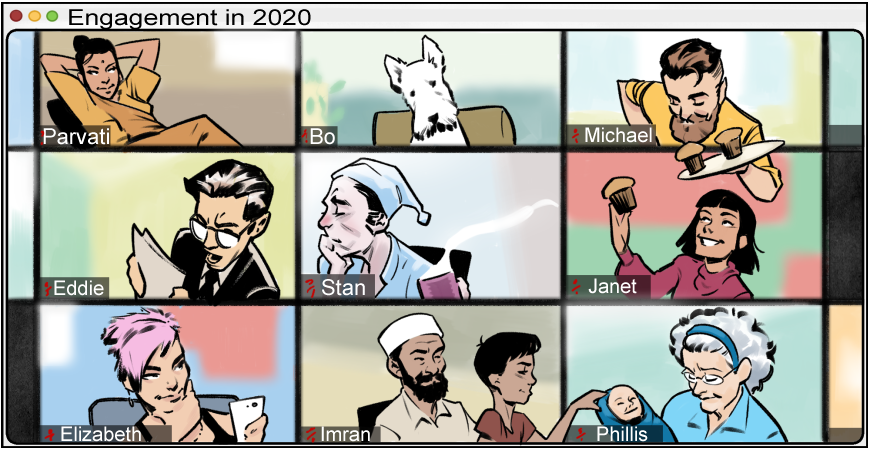This is the year where the phrase ‘change is the only constant’ took on a whole new meaning. Every aspect of our lives has been impacted in some way by COVID-19, and as we embark on our ‘new normal’ here in Western Australia with the introduction of the controlled border, let’s take stock of what this means for community engagement.
Traditionally, community engagement has been very much a physical endeavour. Best practice dictated that community groups, reference groups and committees were brought together around issues to debate, guide and provide feedback.
Honestly, is there anything better than real grassroots community engagement where passionate members of the community come together, the private sector listens, and together a real difference is made in the community? More often than not, this is achieved by sitting in a circle in a community hall, using an abundance of post-it notes and drinking lots of coffee.
At the height of the pandemic, we had to innovate and use methods that avoided social interaction. Far from being a diluted version of best practice, this move to digital platforms opened up a whole world of accessibility, and dare I say it, accountability.
Yes, a Zoom or Teams reference group might not be quite as engaging as a face-to-face meeting. Still, it has enabled people from anywhere, and with commitments that would previously have prevented them from participating to take part and have a say – which at the end of the day is what it’s all about. Community members were also provided with access to council meetings and other deliberations that yes, they could have physically attended before, but how many people have the time?
Last week marked seven months with no community transmission in WA, and this weekend our hard border turned into a controlled border with health screening and COVID testing, as well as no quarantine measures in place for interstate travellers from TAS, QLD, SA, ACT and NT. Although, as quickly as the controlled border went live, an outbreak in South Australia meant that quarantine measures were reintroduced, emphasising the uncertainty that our new normal brings.
Everyone will have their view on the controlled border, but as community practitioners, the most important thing we can do is understand the mood of the public and ensure that whatever method we choose to use to engage, we make them feel comfortable so they continue to provide their invaluable feedback. Let’s remember that the ‘community’ is also not a homogenous group. Vulnerable groups such as the elderly may be particularly concerned, and digital methods may not be their preference so putting ourselves in the shoes of the community will continue to be important.
Some things to consider:
- Revisit your COVID-Safe plans in light of the new environment;
- Things may change rapidly, be prepared to adapt and evolve quickly;
- Hybrid engagement may be a good option, providing in-person and digital alternatives; and
- Maintain physical distancing where possible, encourage good hygiene (always bring hand sanitizer) and encourage participants to stay home if they’re unwell.
Whatever the next phase of this pandemic holds, we need to ensure that communities continue to have their say over decisions that affect their lives. As they say, never waste a crisis, and when it comes to community engagement, we may look back at 2020 and see it as a time when the need for innovation led to a more accessible and highly responsive new normal – which I believe can only be a good thing.
 ReGen Strategic
ReGen Strategic